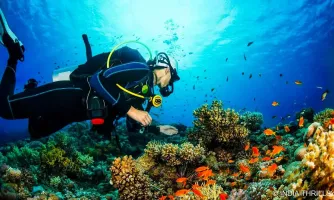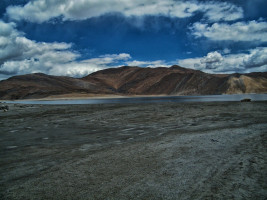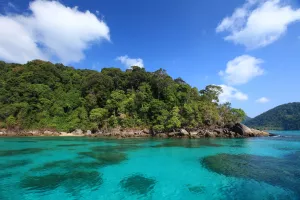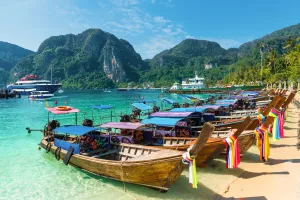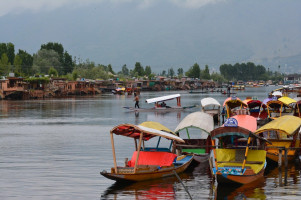Joysagar Tank And Temples Travel Guide
Joysagar Tank and Temples, located in Assam, India, is a historical site dating back to the Ahom Kingdom. The site is famous for its massive man-made tank, Rang Ghar amphitheater, and the temples dedicated to Lord Vishnu. Visitors come to marvel at the architectural wonders and learn about the rich cultural heritage of the region.Top Attractions in Joysagar Tank And Temples
- The Ahom Rulers' Palace
- Rang Ghar Amphitheater
Joysagar Tank And Temples is Famous for
Its historical significance and architectural marvels.Top Attractions in Joysagar Tank And Temples
- Exploring the Ahom Rulers' Palace
- Witnessing a cultural performance at Rang Ghar Amphitheater
- Picnicking by the tranquil Joysagar Tank
- Marveling at the intricate carvings in Joysagar Temples
What's Great about Travelling to Joysagar Tank And Temples?
- Experience the history of the Ahom Kingdom
- Architectural wonders to explore
- Rich cultural heritage
What's Not So Great about Travelling to Joysagar Tank And Temples?
- Limited modern amenities
Travel Tips for Joysagar Tank And Temples
- Check visa requirements before travel
- Opt for local transportation for a more authentic experience
Important Joysagar Tank And Temples trip information
- Ideal Duration: 2-3 days
- Best Time to Visit: October to March
- Nearby Airports and Railway Stations: Jorhat Airport and Mariani Railway Station
Per Person
29,850
*EXCLUDING APPLICABLE TAXES 4.9 Ratings
( 185 Reviews )
( 185 Reviews )
Per Person
13,000
*EXCLUDING APPLICABLE TAXES 3.7 Ratings
( 5 Reviews )
( 5 Reviews )
Per Person
26,500
*EXCLUDING APPLICABLE TAXES 5.0 Ratings
( 239 Reviews )
( 239 Reviews )
Per Person
28,780
*EXCLUDING APPLICABLE TAXES 5.0 Ratings
( 239 Reviews )
( 239 Reviews )
Per Person
27,000
*EXCLUDING APPLICABLE TAXES 5.0 Ratings
( 4 Reviews )
( 4 Reviews )
Per Person
23,000
*EXCLUDING APPLICABLE TAXES 3.7 Ratings
( 5 Reviews )
( 5 Reviews )
FAQ's on Joysagar Tank And Temples
Q1: What is the best time to visit Joysagar Tank And Temples?
The best time to visit Joysagar Tank And Temples is during the winter months from November to February when the weather is pleasant and ideal for exploring the outdoor attractions. This period also coincides with various festivals and events that showcase the cultural richness of the region. It is recommended to avoid the monsoon season from June to September due to heavy rainfall that may impede travel plans.
Q2: Do I need a visa to travel to Joysagar Tank And Temples?
Tourists visiting Joysagar Tank And Temples typically require a tourist visa to enter the country. However, it is advisable to check with the nearest embassy or consulate for specific visa requirements based on your nationality. Some countries may be eligible for visa exemptions or visa on arrival facilities. It is important to ensure that your passport is valid for at least six months beyond your intended stay.
Q3: What are the must-visit attractions in Joysagar Tank And Temples?
The must-visit attractions in Joysagar Tank And Temples include the historic Joysagar Tank, Rang Ghar amphitheater, Kareng Ghar palace ruins, and the numerous temples scattered around the area. Visitors can explore the rich architectural heritage, intricate carvings, and serene surroundings of these sites. Don't miss the chance to witness the traditional festivals and cultural performances that take place at these attractions, offering a glimpse into the region's vibrant history and culture.
Q4: Is Joysagar Tank And Temples a safe place to travel?
Joysagar Tank And Temples is generally a safe place for travelers, but like any destination, it is recommended to exercise caution and be aware of your surroundings. It is advisable to avoid isolated areas, travel with reputable guides or tour operators, and keep your belongings secure. Stay informed about local news and follow any safety guidelines provided by authorities to ensure a smooth and secure travel experience.
Q5: What is the local currency in Joysagar Tank And Temples and can I use credit cards?
The local currency in Joysagar Tank And Temples is the Indian Rupee (INR). ATMs are available in urban areas for cash withdrawals, and major credit cards are accepted at hotels, restaurants, and larger establishments. However, it is recommended to carry some cash for smaller vendors and markets that may not accept cards. Inform your bank of your travel plans to avoid any issues with card transactions abroad.
Q6: What is the local cuisine like in Joysagar Tank And Temples?
The local cuisine in Joysagar Tank And Temples is diverse and flavorful, offering a mix of Assamese, Bengali, and tribal influences. Must-try dishes include Assamese thali, fish curry, pithas (rice cakes), aloo pitika (mashed potatoes), and traditional sweets like pitha, ladoo, and payas. Vegetarian and non-vegetarian options are widely available, catering to different dietary preferences. Be sure to explore local markets and street food stalls to savor authentic flavors and culinary delights unique to the region.
Q7: What transportation options are available in Joysagar Tank And Temples?
Transportation options in Joysagar Tank And Temples include buses, auto-rickshaws, taxis, and rental cars for convenient travel within the region. Public buses are a cost-effective way to navigate between towns and attractions, while auto-rickshaws and taxis provide door-to-door services for more flexibility. Renting a car or hiring a driver is ideal for exploring the surrounding areas at your own pace. It is recommended to negotiate fares in advance and confirm transportation arrangements with reliable providers for a hassle-free journey.
Q8: Are there any cultural norms or etiquette I should be aware of when visiting Joysagar Tank And Temples?
When visiting Joysagar Tank And Temples, it is important to respect local customs and traditions. Dress modestly when visiting religious sites and remove your shoes before entering temples or sacred places. Seek permission before taking photographs of locals, especially in rural areas. Greet people with a smile and a nod of the head as a sign of respect. Avoid public displays of affection and be mindful of cultural sensitivities. It is customary to offer a small donation when visiting temples and shrines. By being aware of and respecting the local customs, you can have a more enriching and meaningful travel experience in Joysagar Tank And Temples.
Q9: I am a travel agent. How can I buy travel leads of Joysagar Tank And Temples?
Register yourself as a travel agent at agents.tripclap.com and then you can buy travel leads to Joysagar Tank And Temples once your account is approved. For more details contact our support team at +91-8069186564 or support@tripclap.com
